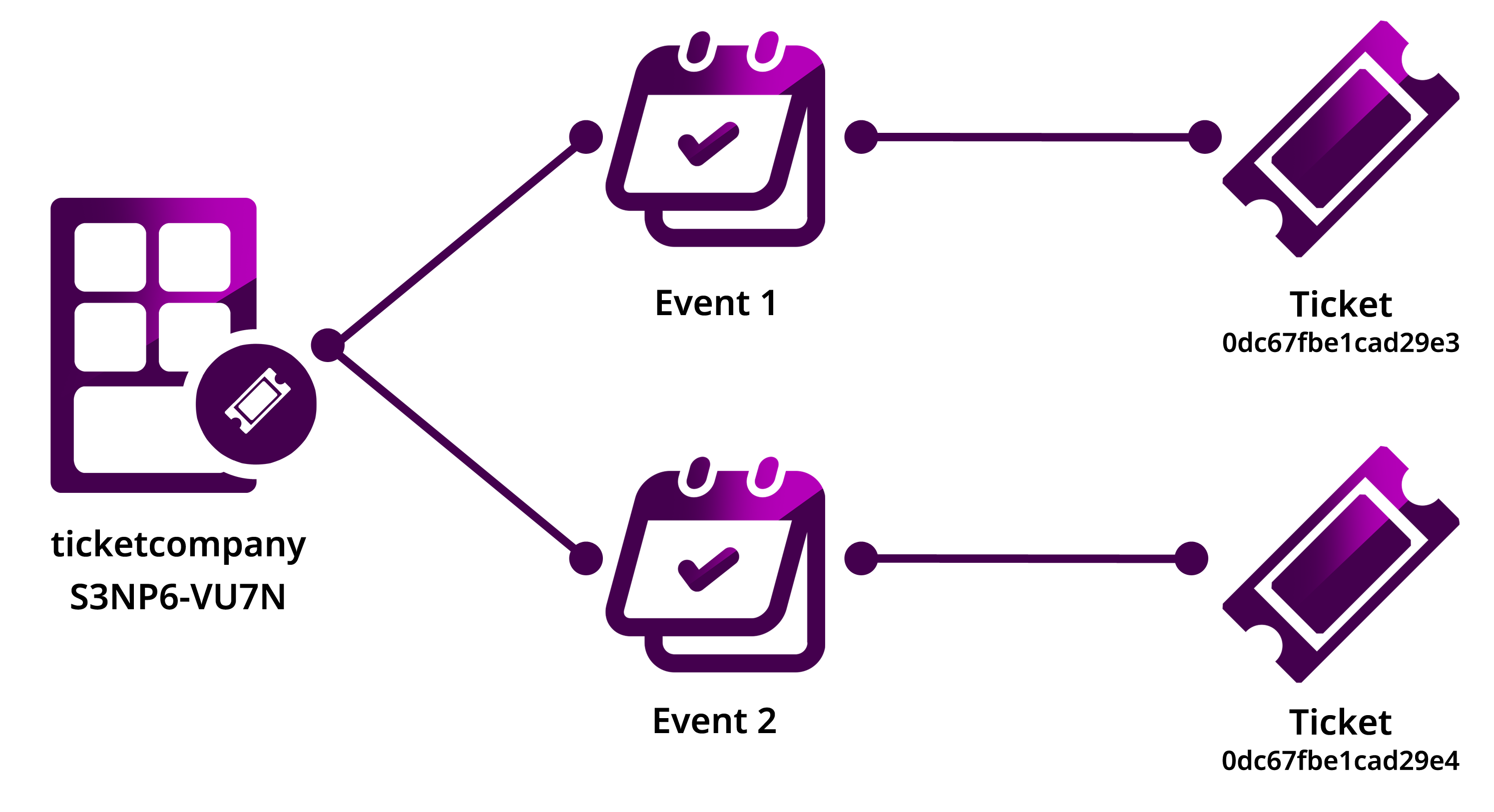Namespaces are human-readable text strings that can be used in place of an Address or a Mosaic ID.
They create an on-chain unique place for your project and your assets on the blockchain.
Namespaces function similarly to internet domains.
Creating a namespace starts with choosing a name that you will use to refer to an account or asset.
The name must be unique in the network, and has a maximum length of 64 characters (the only allowed characters are a through z, 0 through 9, _ and -).
At the time of the namespace registration, you must set the number of confirmed blocks you would like to rent the namespace for.
The public network defines a minimum namespace duration of 30 days and a maximum of 365 days, being these parameters editable per network.
You can use the following formula to convert approximately days to blocks:
By default, blockGenerationTargetTimeInSeconds is 30 seconds.
During the renting period, the namespace creator can create subnamespaces, alias accounts and mosaics. The creator can also extend the rental by sending a NamespaceRegistrationTransaction with the desired number of additional blocks.
The network can define a grace period that enables the namespace creator to renew the namespace past the expiration date before it becomes publicly available for registration. Symbol’s public network has set the grace period to 30 days.
When the grace period ends, the namespace is deleted. At this point, the namespace becomes available for its registration again.

Note
Only namespaces created during the nemesis block can have perpetual duration.
On the internet, a domain can have a sub-domain. Symbol namespaces can have subnamespaces to identify and organize assets.

In the public network namespaces can have up to 3 levels, i.e., a namespace and two levels of subnamespace domains. Each root namespace can have up to 256 subnamespaces.
A subnamespace does not have a duration by its own; it inherits the duration from its parent namespace.
You can create multiple subnamespaces with the same name in different namespaces.
For example, you can create the subnamespaces foo.bar and foo2.bar, but the combination rootnamespace + subnamespace must remain unique.
AddressAliasTransaction link namespaces to accounts and mosaics. An alias or its linked asset can be used interchangeably when sending a transaction. Using the alias makes long addresses rememberable and mosaics recognizable.
The creator of the namespace can link the namespace to an account or mosaic. This link will be editable, so the creator may unlink a previously set alias and link the namespace to a different asset.
The block receipts store the resolution of the alias for a given transaction. This is, what was the actual address or mosaic ID behind a namespace when a transaction was issued.
Alias transactions have the following restrictions:
An account or mosaic can be linked to many namespaces but a namespace can only be linked to one account or mosaic.
An account can assign a namespace to any account that permits receiving AddressAliasTransaction.
An account can only link the alias to a mosaic id when the account is the creator of the mosaic.
An account willing to register a namespace or extend its duration has to pay a rental fee in addition to the transaction fee. Both fees will be deducted from the account’s balance after the announcement of a valid NamespaceRegistrationTransaction.
The REST Gateway provides an endpoint to get an estimation of how much network currency will cost you to register a namespace:
const nodeUrl = 'NODE_URL';
const repositoryHttp = new RepositoryFactoryHttp(nodeUrl);
const networkHttp = repositoryHttp.createNetworkRepository();
networkHttp.getRentalFees().subscribe((rentalFees) => {
console.log(
'RootNamespaceRentalFeePerBlock',
rentalFees.effectiveRootNamespaceRentalFeePerBlock.compact(),
);
console.log(
'ChildNamespaceRentalFee',
rentalFees.effectiveChildNamespaceRentalFee.compact(),
);
});
const nodeUrl = 'NODE_URL';
const repositoryHttp = new symbol_sdk_1.RepositoryFactoryHttp(nodeUrl);
const networkHttp = repositoryHttp.createNetworkRepository();
networkHttp.getRentalFees().subscribe((rentalFees) => {
console.log(
'RootNamespaceRentalFeePerBlock',
rentalFees.effectiveRootNamespaceRentalFeePerBlock.compact(),
);
console.log(
'ChildNamespaceRentalFee',
rentalFees.effectiveChildNamespaceRentalFee.compact(),
);
});
The default namespace rental fees are configurable per network, but the network dynamically adjusts the namespace rental fees over time.
To calculate the effective rental fee, the network multiplies the default value set in the configuration by the network’s dynamic fee multiplier.